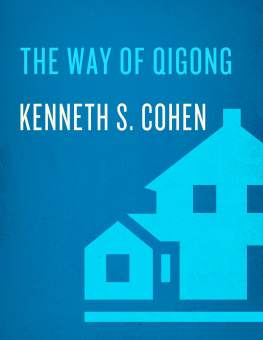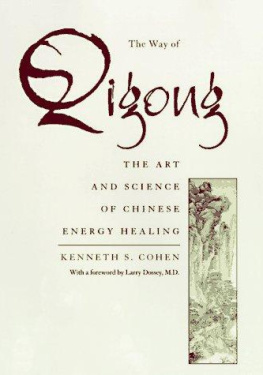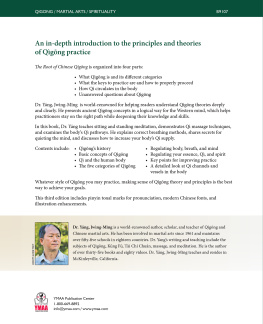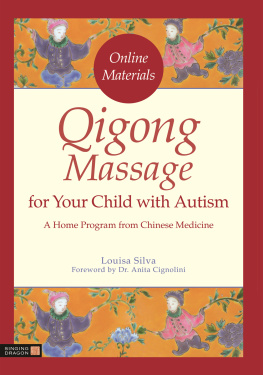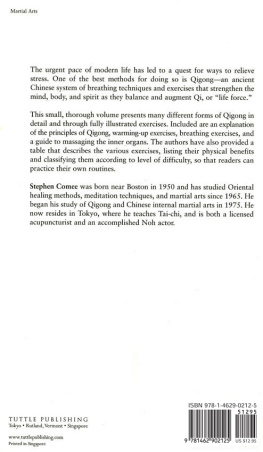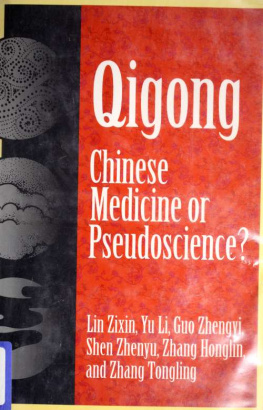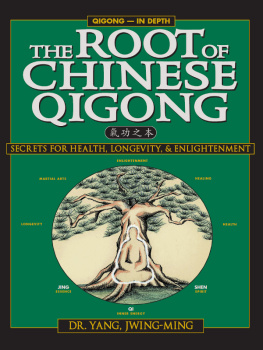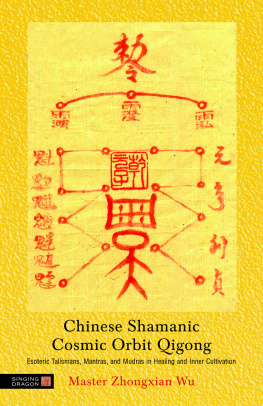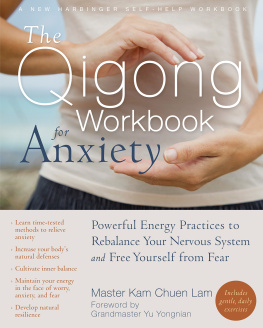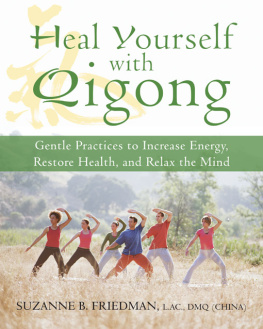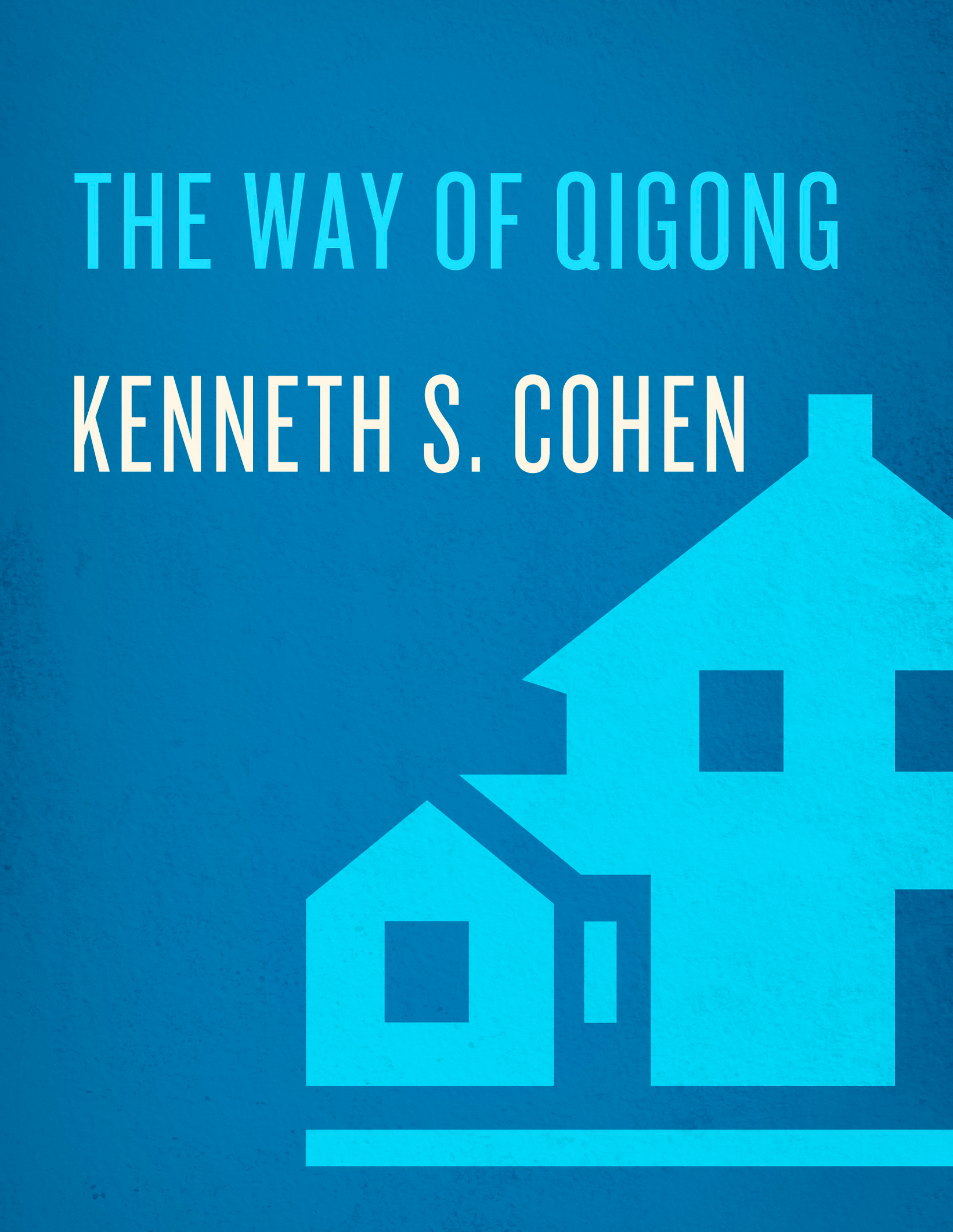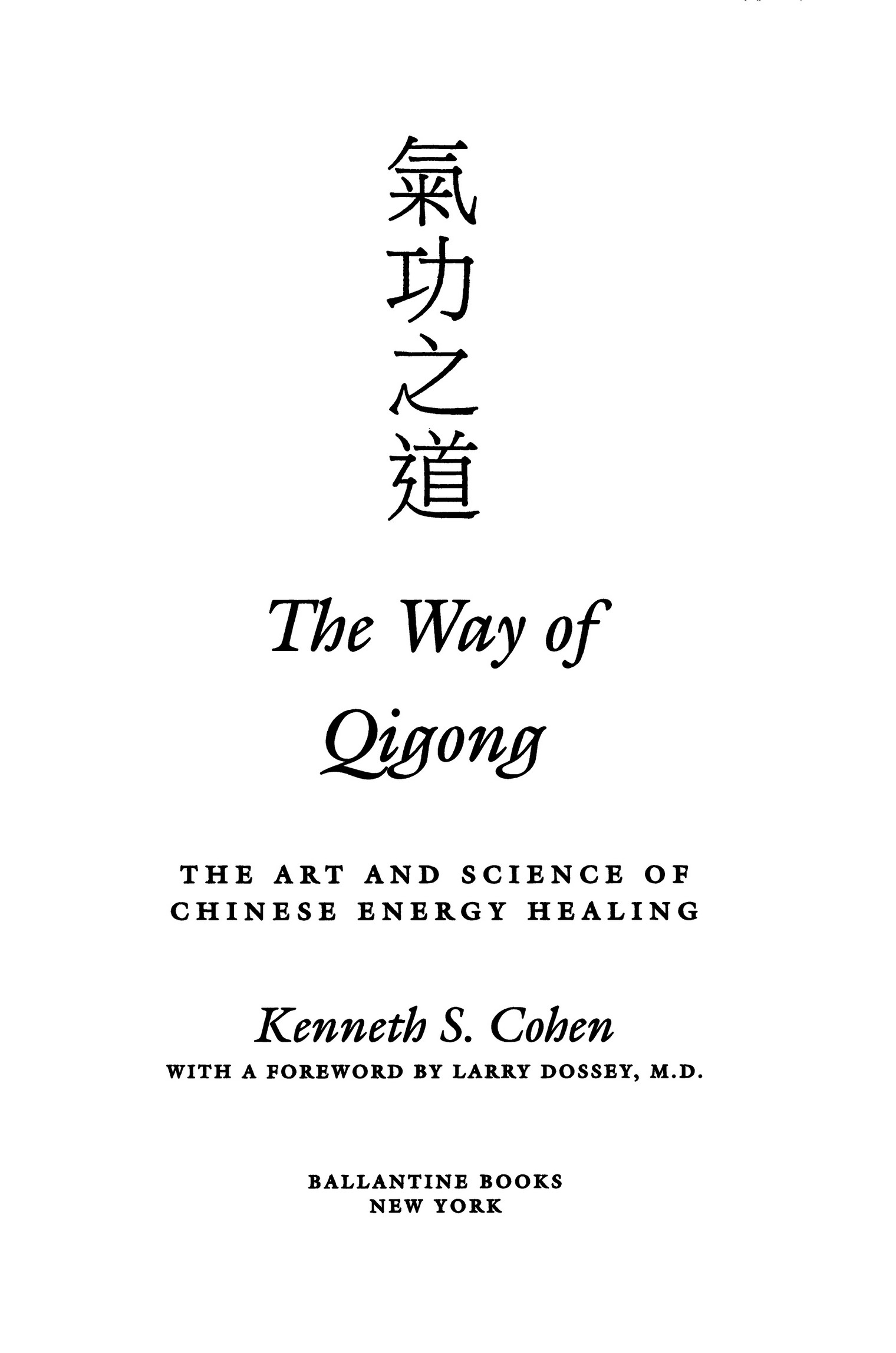Contents
Landmarks
Print Page List
A DEFINITIVE VOLUME
The most comprehensive book on the Chinese healing art, qigong. Related to tai chi, qigong is a series of movements designed to bring qi or life-force into the body and encourage it to flow without blockage.The illustrated section of exercises [Cohen] includes shows how qigong can be used for emotional and spiritual as well as physical healing.
Patricia Monaghan
American Library Association
Ken Cohens treatment of the ancient healing and self-healing art of qigong represents the gold standard against which works on other therapeutic methods might well be measured.
Christopher Bird
Coauthor of The Secret Life of Plants and Secrets of the Soil
Ken Cohen is a rare combination of expert practitioner, gifted scholar, and lucid writer. He manages to convey not only the techniques of qigong, but its wisdom. I highly recommend The Way of Qigong for yourself and for those you care about.
Elmer Green, Ph.D.
Author of Beyond Biofeedback
Ken Cohens mastery of qigong, rooted in a deep understanding of Chinese language and culture, gives him an extraordinary ability to express qigong from the perspectives of East and West. The Way of Qigong is filled with fresh insight and original scholarship. To say that I was amazed by this monumental work would be an understatement!
Madame Chu Xing-yan
Professor of Linguistics Beijing Academy of Music
THE BEST, MOST COMPREHENSIVE BOOK ON QIGONG WRITTEN.
A must for anyone interested in Chinese medicine or Chinese energy healing.
Wayne B. Jonas, M.D.
The concept of qi, prana, or life energy is universal and transcends every culture in the world. The Way of Qigong is indeed a remarkable encyclopedia. For those interested in optimal health, Ken Cohens book allows you an opportunity not only to work with life energy, but to play with it.
C. Norman Shealy, M.D., Ph.D.
Founding President American Holistic Medical Association
A feast of information on the history, theory, and practice of this potent therapy, all in highly digestible bites, flavored with personal experiences and humor. The insights of the West extend and enrich the teachings of the East, particularly in Cohens sensitivity to psychological issues which are often handled in a very limited way in other works.Highly recommended for professionals and lay persons who wish to understand this potent healing practice.
Daniel J. Benor, M.D.
Psychiatrist Author of Healing Research, Vol. I-IV
A Ballantine Book
Published by The Random House Publishing Group
Copyright 1997 by Kenneth S. Cohen
Foreword copyright 1997 by Larry Dossey, M.D.
All rights reserved under International and Pan-American Copyright Conventions. Published in the United States by Ballantine Books, an imprint of The Random House Publishing Group, a division of Penguin Random House, LLC, New York, and simultaneously in Canada by Random House of Canada Limited, Toronto.
Ballantine and colophon are registered trademarks of Penguin Random House, LLC
www.ballantinebooks.com
Library of Congress Catalog Card Number: 98-96946
ISBN9780345421098
Ebook ISBN9781984800428
Illustrations by Bonnie J. Curnock
First Hardcover Edition: April 1997
First Trade Paperback Edition: March 1999
v5.3.2_r1
a
The faith in the order of nature which has made possible the growth of science is a particular example of a deeper faith. This faith cannot be justified by any inductive generalisation. It springs from direct inspection of the nature of things as disclosed in our immediate present experience.To experience this faith is to know that in being ourselves we are more than ourselves: to know that our experience, dim and fragmentary as it is, yet sounds the utmost depths of reality.
ALFRED NORTH WHITEHEAD SCIENCE AND THE MODERN WORLD
Contents
Foreword
Sometimes we learn the lessons we most desperately need in the form of illness. That was my experience, and I know it is the experience of many persons who will read this book. Let me explain why Kenneth S. Cohens insights could have helped me, and why they will benefit you.
As a first-year student I attempted to drop out of medical school because of chronic, classical migraine headache syndromerecurrent episodes of blindness, nausea, vomiting, and insufferable headache, followed by periods of incapacitation. I was concerned I might injure someone during surgery if the blindness came on unpredictably, as it always did. My medical school adviser, however, convinced me to endure the problem and remain in school.
I was unaware at the time that my problem was compounded by anxiety, stress, and overwork. I was an excellent studentintelligent enough, and utterly compulsive and driven. I had no insight whatever into the mind-body relationships so commonly discussed today. In fact, I was unaware I had a mind-body connection. That came years laterwhen I discovered biofeedback and meditation, which for the first time allowed relief from the problem that nearly halted my career and made my life miserable.
When I recall my medical school experience, I regret that there were no Kenneth Cohens around. If there had been, I am certain my experience would have been pleasantly different. But at that time we medical students had never heard of qigong. I am delighted that the situation is changing.
Someday soon, the principles of healing you are about to read about will be taught in all our medical schools. In fact, this is already beginning to take place, as an increasing number of institutions develop courses in alternative or complementary medicine, including qigong.
There are two main reasons for the growing acceptance of these methods: They constitute both good science and authentic wisdom. Science and the venerable tradition of qigong are joining hands, as you are about to read. As a consequence, qigong can no longer be considered just a matter of faith or belief, nor as only a body of practical knowledge accumulated across the centuries, although this would be impressive enough. When the methods Cohen describes are subjected to rigorous empirical tests, they repeatedly demonstrate their worthiness. These developments are immensely important. They indicate not only increasing acceptance of qigong, but increasing openness within science and medicine as well.
Modern medicine, as everyone knows by now, can be spectacularly successful and woefully inadequate. It alternately inspires praise and condemnation. Almost every thinking person, both inside and outside the profession, realizes we need more than a mechanical, technical approach to healing. We hunger for a balance between body, mind, and spiritwhich is contained in the healing approach of qigong.
In his discussion of qigong, Cohen wears two hats, as all modern healers should. First, he is a scientist. He realizes that science has become the dominant metaphor of our culture, and that we cannot ride roughshod over its methods and messages. Unlike many unorthodox healers who seem to carry a grudge against science, Cohen realizes it has something valuable to offer. Among other things, it remains a valuable way of guarding against certain kinds of delusions. Cohens other hat is that of a healer and mysticone who honors the great mysteries of existence, and who feels that a union with the Divine PrincipleGod, Goddess, Allah, the Dao, the Universeis possible. I would never trust a healer who does not have respect for both science and spirituality. That is why I trust Cohen. That is why I recommend him to you.

